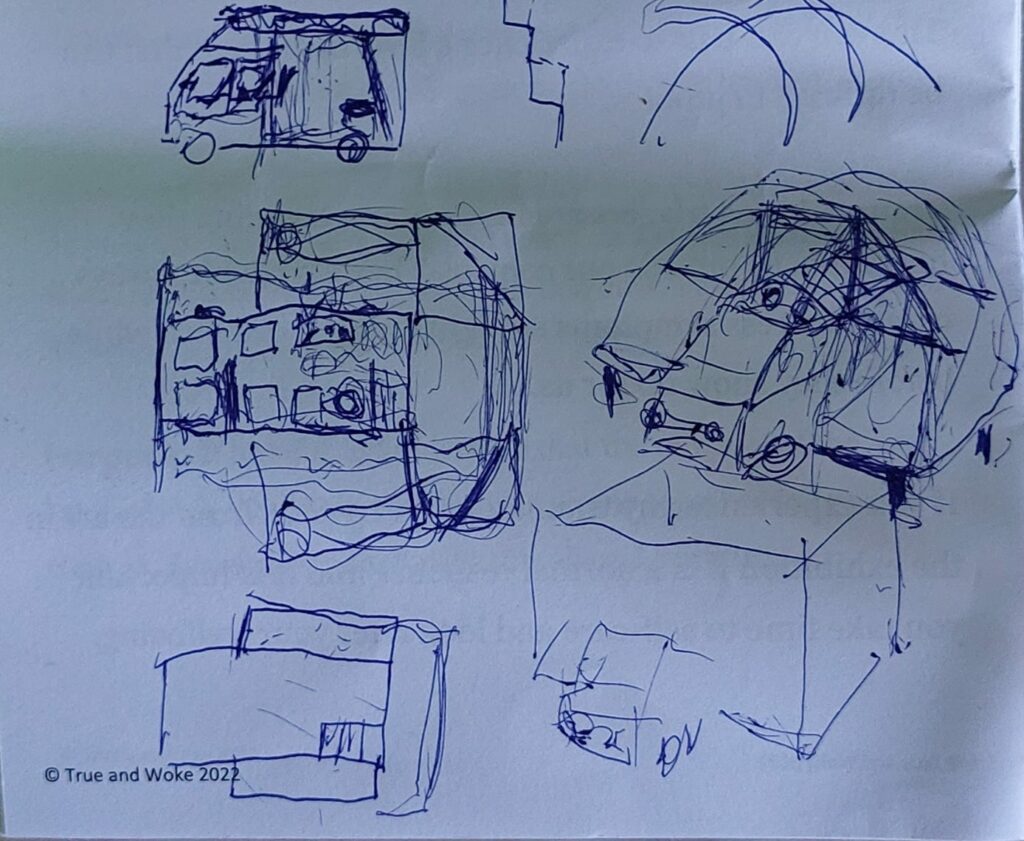
Camper Vans (Recreation Vehicles, Motor Homes) all suffer from a terrible tradeoff – convenience of living vs convenience of driving. A small van, that is not very different from a family car in size (think classic Volkswagen T2, the same width and length of Toyota Prius) is not much more than a bed and a table on wheels. Yet it is already providing some substantial benefits over a car + tent :
- Your take your mess with you, packing and unpacking time is minimized
- Your bed is much more comfortable, weather protection is far superior
- Some essential facilities like heating system, small gas stove, kitchen sink, fridge, light and music are installed in their places, one less thing to worry about
- A van is bigger than a private car, you can bring more people or more stuff or spend less time compacting stuff in
- You are much more secured during the night from people and other animals
A bigger van (think supermarket delivery) will allow you to put a couple more bunk beds for kids, even more storage space, walking up straight inside and even can squeeze in the true game changer of your vacation – shower and toilet, becoming a mini motor home. The convenience of having your conveniences with you can hardly be overappreciated, as you become a truly independent nomad; whenever you feel like you chose a nice stop spot with a view and enjoy the rest of your evening. The down side is the squeezing part – everything becomes tiny and crowded. In addition, you drive something you don’t normally think of driving and you are generally surprised it is even legal to let you drive this whale. Also expect learning the hard way how to make a tight turn.
A different driving license makes you the kubernetes of the camper sea – you navigate your full sized motorhome, a converted bus maybe, through rivers of autostradas into the lakes of big parkings, enjoying the comfort of a small yacht. It is true, you cannot pass in some of the tighter roads, your fuel consumption would buy you a 5 star hotel and the cost of your vehicle makes you uncomfortable to leave it unattended – but, you can literally live there for months.
Now. What if we use space technologies of pop-up habitats to pack the comfort of a yacht into a family car sized truck? Think of a form factor of a Japanese cab-over mini truck like Daihatsu Hijet , maybe a little bigger, at least as a modern Prius, and let’s see how we can engineer a pop-out space out of it.
First, the truck walls are falling down to become the floor of the yurt. Some floor chunks in the corners are missing, and unfold together with the yurt walls and ceiling, all made of a hard thin plastic. Think of origami kayaks material, at least as safe for burglary as your windshield. The yurt floor is supported by telescopic legs to the ground. The ceiling is ~1.5m above the original truck box top, on which we find a comfortable stationary double bed, with fabric walls to the ceiling to protect you from falling. The yurt walls are ~1.5m away from the inside of the truck box. The only entrance to the yurt remains through the truck’s doors. All in all the construction resembles a snail or an iglu.
Inside the truck box we find a toilet, a kitchen, storage drawers, fridge, fresh/grey/black water tanks, gas balloons. To access it all you have to go around it on the yurt floor. Shower cabin is formed by zipping a curtain on the new floor space. Instead of bunk beds, bed rolls are unwrapped on the yurt floor before sleeping. The two front seats swivel back to face the back seats, the table between them is unfolded ready for dining.
When you are ready to go again – note there is nothing to pack but the bed rolls. You walk around the yurt, lift the floors and origami-fold the walls back in place, close the gas valve and you are good to go. There are some technical issues remaining, like – how quickly can you access the toilet from the second you pulled your arm breaks and where does the kitchen CO2 goes to, but they don’t look like show stoppers.
How different is it from traveling with an awning (essentially an attached tent)?
- Main bed is more comfortable, essentially as good as home
- Bed rolls are not on the cold ground
- Safer than a tent
- Better wind/rain protection
- Less terrain demanding – the patch does not need to be all even or even clear from stones and bushes, meaning it is easier to find
- Arguably, easier to lift and pack
Finally let’s try to have some market analysis. The potential market is bigger than the existing camper van market size, as it lifts the big car entrance barrier to a relatively comfortable travel experience. Being a cheap and flexible solution, the competition here is rather with hostels and airbnb. If you plan a multi town trip, I can easily see how you compromise on the quality of your room to save on the check-in check-out pack-unpack headache. Together with the rise of car sharing and camp sites geolocation apps this innovation can make camper van tourism extremely accessible to the general public. The biggest challenge is of course how good and easy do you do your origami yurt.
